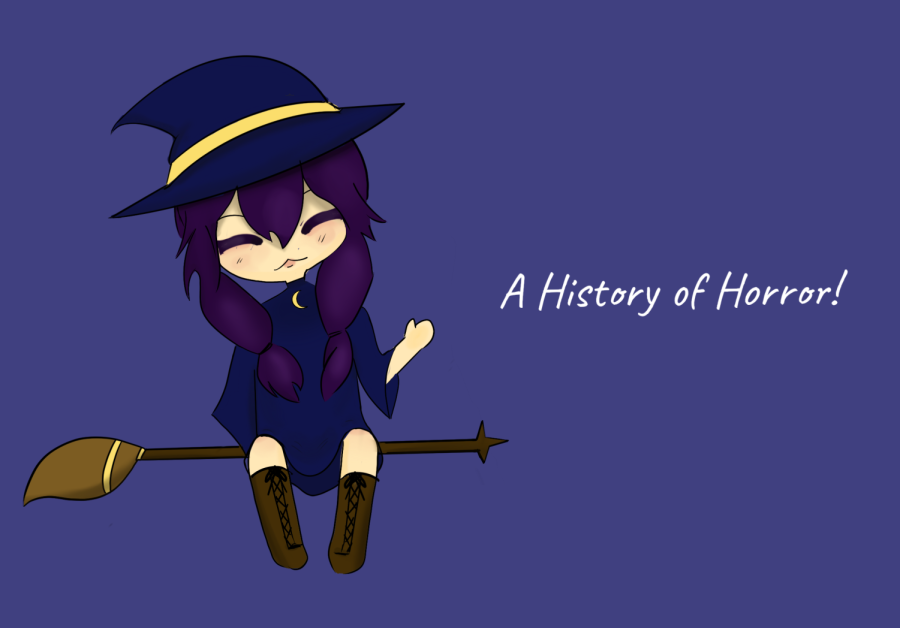A Trip Through Horror History: A Timeline of the Greatest Eras of Scary Films
What you need to know about the history of horror films.
October 19, 2022
Not long after the invention of the motion picture in the early 1880s, the first-ever horror movie was created. Only a little over a decade passed when, in the late 1890s, what is believed to be the first ever scary film, “The House of the Devil” by French director Georges Melies, was made.
In no time, the spark of intrigue for horror began spreading like wildfire across the world at incredible rates, and scary stories and folklore soon weren’t enough to satisfy the minds of those fascinated with monsters, ghosts, and ghouls.
The Beginning (1890s-1920s):
Continuing after the creation of “The House of the Devil” in the early days of the nineteenth century, films from Germany like “Nosferatu” and “Cabinet of Dr. Caligari” started gaining traction in the U.S. and influenced many notable films such as “M” and “Metropolis.”
Horror was experimental and completely new to the everyday person, but that is exactly what people found so incredible. From there, significant movies such as “The Hunchback of Notre Dame” and “The Phantom of the Opera” made their way into the public eye.
Golden Age of Monster Movies (1930s-1940s):
In the 1930s, the beginning stage of shock had worn off, and a new era filled with classic monsters began. Universal Studios began taking initiative and, in 1931, released “Dracula,” directed by Tod Browning, and “Frankenstein,” directed by James Whale — both based on popular literature.
From this age, we gained some of the most classic horror characters and monsters that children still dress up as for Halloween to this day. Creatures like zombies, vampires, and werewolves had taken over the media, and the general public was loving it.
The Cold War’s Influence (1950s):
Horror films weren’t just about monsters for the sake of scaring audiences anymore. Genuine fear of invasion was sparked due to the beginning of the Cold War, and audiences were looking for connections in the media to their own lives and experiences, a connection that horror films started to provide.
Movies like “The Thing From Another World,” “Invasion of the Body Snatchers,” and “The Blob” all took inspiration from real fears and created films that audiences could relate to. This period was also a time when filmmakers introduced 3D and various other new and creative ways to draw audiences back in.
A New Edge (1960s-1970s):
Before the 1960s, it was rare to find a horror film that completely crossed the line of public comfort levels. Though horror had always been experimental, crossing into sexual or new levels of violence was founded in this era. So, as films typically do, horror followed the social revolution, resulting in thrillers gaining a new edge.
Films like “Peeping Tom,” “Psycho,” and “The Birds” lit the match and created a trend of media that pushed previous barriers. Films began pushing even further into the 70s, a time of societal uncertainties and fears, covering social issues like sexism, war, and consumerism.
Along with the new age of pushing limits, the 70s also did not shy away from violence and sexual content within the horror genre. With movies such as “I Spit on Your Grave,” “The Texas Chainsaw Massacre,” and even cannibal films like “The Man From Deep River” started to rise, and so did the normalization of previously taboo topics.
The Birth of Slashers (1980s-1990s):
The 1980s-1990s was when things started to get more recognizable, with a lot of the films from this time becoming classics. Slashers like “Prom Night” and “A Nightmare on Elm Street” were being released all the time. Some more memorable movies like “The Shining,” “Friday the 13th,” “Child’s Play,” and “Pet Sematary” also came from these years.
The later half of this age even took a very light-hearted and self-aware take on the genre itself, with movies such as “Re-Animator,” “The Return of the Living Dead,” and “House” adding comedic values into the genre.
Anything Goes (2000s-2020s):
From the 2000s onward, many notable and influential horror movies were released, but at this point there seemed to be a lack of pattern within the horror genre itself. Before, the majority of horror movies per decade had similar premises. But now, in the modern day, there is much more freedom in the genre as a whole.
From self-aware horror comedies, to psychological thrillers, and even campy sequels and crossovers, horror has developed into such a huge genre that now there are so many new possibilities for what can go under the scary movie umbrella.





